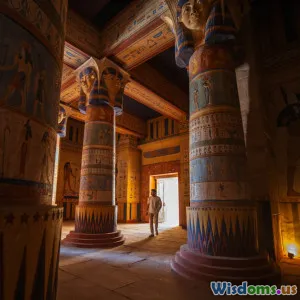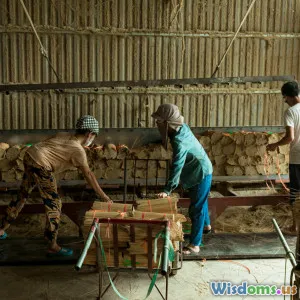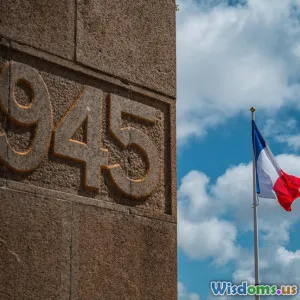
The Great Archeological Finds of the 21st Century
8 min read Explore groundbreaking archaeological discoveries of the 21st century that illuminate ancient civilizations and unravel long-held mysteries. (0 Reviews)
The Great Archaeological Finds of the 21st Century
Archaeology is often viewed as a gateway to the distant past, a discipline that helps us peel back layers of time to reveal the human stories buried beneath soil and stone. The 21st century, however, has witnessed some of the most groundbreaking discoveries ever recorded—finds that not only deepen our understanding of ancient civilizations but occasionally turn established history on its head. This article explores these remarkable finds, showcasing exceptional archaeological milestones, the techniques used to uncover them, and how they have elucidated ancient mysteries.
Rediscovering the Ancient Metropolis Beneath Mexico City: The Sacred City of Tenochtitlán
In 2007, the remains of the legendary Aztec city Tenochtitlán were further revealed beneath modern-day Mexico City. While the city was known historically as the Aztec capital before being destroyed by Spanish conquistadors in 1521, the precise scale and layout remained elusive.
Archaeologists employed advanced ground-penetrating radar and remote sensing technologies to map out sections of the metropolis hidden under layers of urban infrastructure. These tools unveiled temples, canals, and plazas, suggesting a sprawling urban planning mastery unseen in the Western Hemisphere before European contact.
The discovery reshaped our understanding of Aztec engineering prowess and urban sophistication. Dr. Felipe Solís, a curator involved with the project, noted, "This isn't just a remnant of history, it's a testament to an advanced ecosystem balanced with urban life."
The Vindolanda Tablets: Windows into Roman Britain
Unearthed starting in the late 1990s but continually excavated and cataloged well into the 21st century, the Vindolanda tablets remain among the most significant textual discoveries of the ancient world. These thin wooden leaf tablets contain ink-written documents that provide rare, direct insight into the everyday lives of Roman soldiers and civilians along Hadrian's Wall in northern England.
Dating from around 85 AD, these tablets include personal letters, military reports, and even shopping lists. For example, one letter from Claudia Severa invites a friend to her birthday party, highlighting social aspects typically absent in ancient records.
The survival of organic ink on wood tablets is extraordinary given their age, and their discovery has opened pathways to understanding Roman frontier life not accessible through traditional archaeological artifacts like pottery or stone inscriptions.
Göbekli Tepe: Challenging the Origins of Civilization
Though discovered in the late 20th century, much of Göbekli Tepe’s excavation and study flourished in the 21st century, transforming how scholars view the dawn of civilization. Located in southeastern Turkey, it dates back to roughly 9,500 BCE—making it the oldest known monumental structure built by humans.
Its massive stone pillars etched with animals and abstract symbols predate the advent of agriculture, overturning previous theories that settled farming communities preceded large-scale architectural projects.
Archaeologist Klaus Schmidt, who led excavations until 2014, argued, "Göbekli Tepe proves that ritual practice and social organization were driving forces for settlement and, eventually, agriculture."
This shift in paradigm has triggered ongoing debate about the sequence of societal development, illuminating the complexity of prehistoric belief systems and community dynamics.
The Dead Sea Scrolls’ Digital Resurrection
While the Dead Sea Scrolls were originally discovered mid-20th century, key fragments and previously unseen manuscripts have been digitized and analyzed with 21st-century technology.
This ongoing process has led to the discovery of new fragments and much more precise translations, enriching biblical scholarship and historical understanding of Judaism and early Christianity around 2,000 years ago.
In 2020, the Israel Antiquities Authority released the digital Dead Sea Scrolls, enabling unrestricted global access. This transparency has propelled numerous research breakthroughs—notably the identification of variations in ancient texts that inform religious, historical, and linguistic knowledge.
The Antikythera Mechanism: Unlocking an Ancient Computer’s Secrets
Although discovered in 1901, intensive modern analyses accelerated in the 21st century courtesy of advanced imaging technologies, revealing that the Antikythera mechanism is an ancient Greek analog computer dating to about 100 BCE.
This artifact was designed to predict astronomical positions and eclipses decades in advance. X-ray tomography and 3D modeling uncovered complex gear systems that astounded experts with their precision and technical sophistication.
Today, it is hailed as the world’s oldest known complex mechanical device, showcasing an ancient level of technological understanding thought unattainable for its era, thus prompting historians to reassess the timeline of mechanical ingenuity.
Conclusion: Excavating Our Collective Past to Understand Humanity’s Pathway
The 21st century continues to be a golden age for archaeology, powered by technological innovations like LiDAR scanning, ground-penetrating radar, and digital reconstruction tools.
Each major find—from the submerged cities below modern urban centers to the digitally restored manuscripts—adds rich, nuanced layers to the narrative of human history. These discoveries not only illuminate ancient civilizations’ achievements but also humanize their experiences, aspirations, and complexities.
They challenge our assumptions, inspire international cooperation in archaeological sciences, and highlight the necessity of preserving cultural heritage. As we continue this journey, every unearthed artifact serves as a beacon guiding us through the intertwined history of humanity, reminding us that ancient mysteries hold lessons relevant to our present and future.
The next frontier in archaeology lies not just in digging deeper, but in widening our perspective with technology, interdisciplinarity, and respect for cultures long past. Every century will surely add its own transformative stories, expanding the grand mosaic of human history.
Rate the Post
User Reviews
Popular Posts





















